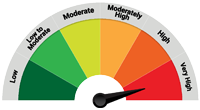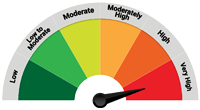What is a Tax-Saving Fund And Why Does It Make Sense for the Risk-takers to Invest in It?
Posted On Monday, Jan 30, 2023
We all aim to maximise our savings, isn’t it? In this respect, along with prudent budgeting and wise use of hard-earned money, saving tax is important. A penny legitimately saved from tax is a penny earned. Effective tax planning can help you save your hard-earned money from taxes as well as create wealth over time.
Several tax-saving avenues, such as the Public Provident Fund (PPF), Employees Provident Fund (EPF), National Saving Certificate (NSC), National Pension System (NPS), Tax Saver Bank Fixed Deposits, Unit Linked Insurance Plan (ULIP), Equity-Linked Saving Schemes (ELSS), etc. are available. All you ought to do is make a sensible choice considering your broader investment objective, investment horizon, and risk appetite.
If you are a risk-taker, young, earning a respectable income during the earning phase of your economic life cycle, are in the process of building assets, addressing long-term financial goals, and do not mind investing for market-linked returns, then investing in Equity Linked Savings Scheme (ELSS) is a worthwhile option.
ELSS, also popularly known as tax-saving mutual funds, is the most sought-after tax-saving instrument that offers both the benefits – of tax saving and wealth creation. A carefully selected ELSS has potential to provide better market linked returns.
SEBI defines tax-saving mutual funds as open-ended equity schemes that come with a statutory lock-in period and tax benefit. These funds invest a minimum of 80% of their assets in equity and equity-related instruments and have the flexibility to invest across sectors and the market cap spectrum. At times some portion of the assets of an ELSS is also invested in debt & money market instruments.
That said, the key objective is providing tax-saving benefit along with capital appreciation, i.e., wealth creation, when you invest.
With the dual benefit of tax saving and wealth building, these funds are immensely popular amongst investors. Even though ELSS or tax-saving mutual funds come with a mandatory lock-in period of 3 years, this lock-in is the lowest compared to other tax-saving instruments such as tax-saver bank FD, NSC, PPF, NPS, etc. Lock-in means you cannot redeem your investment before 3 years from the date of purchase. This applies to both lump-sum and every SIP instalment. If you have an investment horizon of 3 to 5 years, then you may consider investing in tax-saving mutual fund/s.
What is the tax benefit?
The amount you invest in a tax-saving mutual fund or ELSS is eligible for a deduction of up to Rs 1.50 lakh (from gross total income) per financial year. Say you utilise the entire deduction limit of Rs 1.50 lakh, you can end up saving as much as Rs 46,800 in taxes in the respective financial year for investors under the highest tax bracket of 30%.
Besides, when you redeem the tax-saving mutual fund anytime after the lock-in period of 3 years, the long-term capital gain up to Rs 1 lakh will be exempt from tax. If the capital gains are over Rs 1 lakh, the Long-Term Capital Gain (LTCG) @10% (plus 4% cess) is payable.
Keep in mind that there is no upper limit to investing in Tax-saving Fund/s. If you invest a higher sum and if the scheme clocks appealing returns, you would fetch a higher sum on redemption. Having said that, tax benefit under Section 80C is available only up to a sum of Rs 1.50 lakh in a financial year.
How to invest in tax-Saving mutual funds to save maximum tax and build wealth?
If possible, being a risk-taker, utilise the maximum limit of Rs 1.50 lakh available under Section 80C.
You do not necessarily have to invest a lump sum amount to start your investment journey with ELSS. You can opt for a Systematic Investment Plan (SIP) or Systematic Transfer Plan (STP) to spread your investment amount throughout the year and mitigate the volatility involved. But keep in mind that each SIP instalment will have a lock-in period of three years.
Quantum Tax Saving Fund, since its inception in December 2008, has clocked returns at a CAGR of 16.31% (as of Dec 30, 2022)^ by holding a respectable underlying portfolio of 30 quality stocks. Quantum Tax Saving Fund uses a bottom-up approach stock selection process to identify quality stocks for the portfolio and minimise the risk. It holds cash when the fund management team believes stocks are overvalued and takes no exposure to derivatives for hedging. Overall, a research-driven approach is followed, backed by robust investment processes and systems.
^The returns must be read in conjunction with the complete fund performance given below.
Who should consider investing in a Tax-Saving Fund?
Since these funds are equity-oriented mutual funds, the risk of investing is high. Equity market volatility could weigh on the performance of a tax-saving mutual fund. Hence, only if you have a high-risk appetite invest in them. Bear in mind that the returns will be subject to market performance and the underlying portfolio characteristics of the fund.
| ^ Performance of the Scheme | Direct Plan | |||||||
| Quantum Tax Saving Fund - Direct Plan - Growth Option | ||||||||
| Current Value ₹10,000 Invested at the beginning of a given period | ||||||||
| Period | Scheme Returns (%) | Tier 1 - Benchmark# Returns (%) | Tier 2 - Benchmark## Returns (%) | Additional Benchmark Returns (%)### | Scheme (₹) | Tier 1 - Benchmark# Returns (₹) | Tier 2 - Benchmark## Returns (₹) | Additional Benchmark Returns (₹)### |
| Since Inception (23rd Dec 2008) | 16.13% | 16.28% | 16.23% | 15.54% | 81,500 | 83,036 | 82,513 | 75,903 |
| Dec 31, 2012 to Dec 30, 2022 (10 years) | 12.60% | 13.98% | 13.99% | 13.57% | 32,770 | 37,022 | 37,046 | 35,708 |
| Dec 31, 2015 to Dec 30, 2022 (7 years) | 11.16% | 14.16% | 14.28% | 14.23% | 20,978 | 25,283 | 25,460 | 25,395 |
| Dec 29, 2017 to Dec 30, 2022 (5 years) | 8.78% | 11.80% | 12.34% | 13.61% | 15,236 | 17,474 | 17,903 | 18,943 |
| Dec 31, 2019 to Dec 30, 2022 (3 years) | 15.27% | 17.76% | 17.17% | 15.17% | 15,317 | 16,329 | 16,088 | 15,274 |
| Dec 31, 2021 to Dec 30, 2022 (1 year) | 7.76% | 4.78% | 5.69% | 5.82% | 10,773 | 10,477 | 10,567 | 10,580 |
#S&P BSE 500 TRI, ##S&P BSE 200 TRI, ###S&P BSE Sensex. Past performance may or may not be sustained in the future. Different Plans shall have a different expense structure. Returns are net of total expenses and are calculated on the basis of Compounded Annualized Growth Rate (CAGR). #with effect from February 01, 2020 benchmark has been changed from S&P Sensex TRI to S&P BSE 200 TRI. The Scheme is co-managed by Mr. George Thomas & Mr. Christy Mathai. Mr. George Thomas is the Fund Manager managing the scheme since April 1, 2022. Mr. Christy Mathai is the Fund Manager managing the scheme since November 23, 2022. For other Schemes Managed by Mr. George Thomas & Mr. Christy Mathai please click here.
To Conclude:
The dual benefit provided by tax-saving mutual funds is ideal for a risk-taker and willing to invest for a longer period. However, while choosing the ELSS fund, consider several other aspects like the past performance of the fund (returns and risk involved), the investment approach followed, the portfolio characteristics of the fund, the credentials of the fund manager, and many other quantitative and qualitative aspects. A carefully selected tax saver fund in India can help you earn better long term risk adjusted returns, resulting in wealth creation in a long run, while also saving on the taxes.
Happy Investing!
| Name of the Scheme | This product is suitable for investors who are seeking* | Riskometer of scheme | Riskometer of scheme | Risk-o-meter of Tier I Benchmark |
Quantum Tax Saving Fund An Open Ended Equity Linked Saving Scheme with a Statutory Lock in of 3 years and Tax Benefit Tier I Benchmark: S&P BSE 500 TRI | • Long term capital appreciation • Invests primarily in equity and equity related securities of companies in S&P BSE 200 index and to save tax u/s 80 C of the Income Tax Act. Investments in this product are subject to lock in period of 3 years. |  Investors understand that their principal will be at Very High Risk |  |  |
* Investors should consult their financial advisers if in doubt about whether the product is suitable for them.
Disclaimer, Statutory Details & Risk Factors:The views expressed here in this article / video are for general information and reading purpose only and do not constitute any guidelines and recommendations on any course of action to be followed by the reader. Quantum AMC / Quantum Mutual Fund is not guaranteeing / offering / communicating any indicative yield on investments made in the scheme(s). The views are not meant to serve as a professional guide / investment advice / intended to be an offer or solicitation for the purchase or sale of any financial product or instrument or mutual fund units for the reader. The article has been prepared on the basis of publicly available information, internally developed data and other sources believed to be reliable. Whilst no action has been solicited based upon the information provided herein, due care has been taken to ensure that the facts are accurate and views given are fair and reasonable as on date. Readers of this article should rely on information/data arising out of their own investigations and advised to seek independent professional advice and arrive at an informed decision before making any investments. Mutual fund investments are subject to market risks read all scheme related documents carefully.Please visit – www.quantumamc.com/disclaimer to read scheme specific risk factors. Investors in the Scheme(s) are not being offered a guaranteed or assured rate of return and there can be no assurance that the schemes objective will be achieved and the NAV of the scheme(s) may go up and down depending upon the factors and forces affecting securities market. Investment in mutual fund units involves investment risk such as trading volumes, settlement risk, liquidity risk, default risk including possible loss of capital. Past performance of the sponsor / AMC / Mutual Fund does not indicate the future performance of the Scheme(s). Statutory Details: Quantum Mutual Fund (the Fund) has been constituted as a Trust under the Indian Trusts Act, 1882. Sponsor: Quantum Advisors Private Limited. (liability of Sponsor limited to Rs. 1,00,000/-) Trustee: Quantum Trustee Company Private Limited. Investment Manager: Quantum Asset Management Company Private Limited. The Sponsor, Trustee and Investment Manager are incorporated under the Companies Act, 1956. |
Related Posts
-

Understanding AMC: The Asset Management Company to Mutual Funds
Posted On Friday, Sep 06, 2024
In the world of mutual funds, the term "AMC" might appear frequently. AMC stands for Asset Management Company, and it manages the operation and management of mutual funds.
Read More -

IDCW Option in Mutual Funds: A Simple Guide for Investors
Posted On Thursday, Aug 29, 2024
The Indian mutual fund industry has grown incredibly fast over the past 10 years.
Read More -

How to Calculate Returns From an ELSS And Its Tax Implications
Posted On Friday, Feb 10, 2023
As you may know, there are multiple tax-saving options in India to save taxes under Section 80C of the Income Tax Act
Read More



